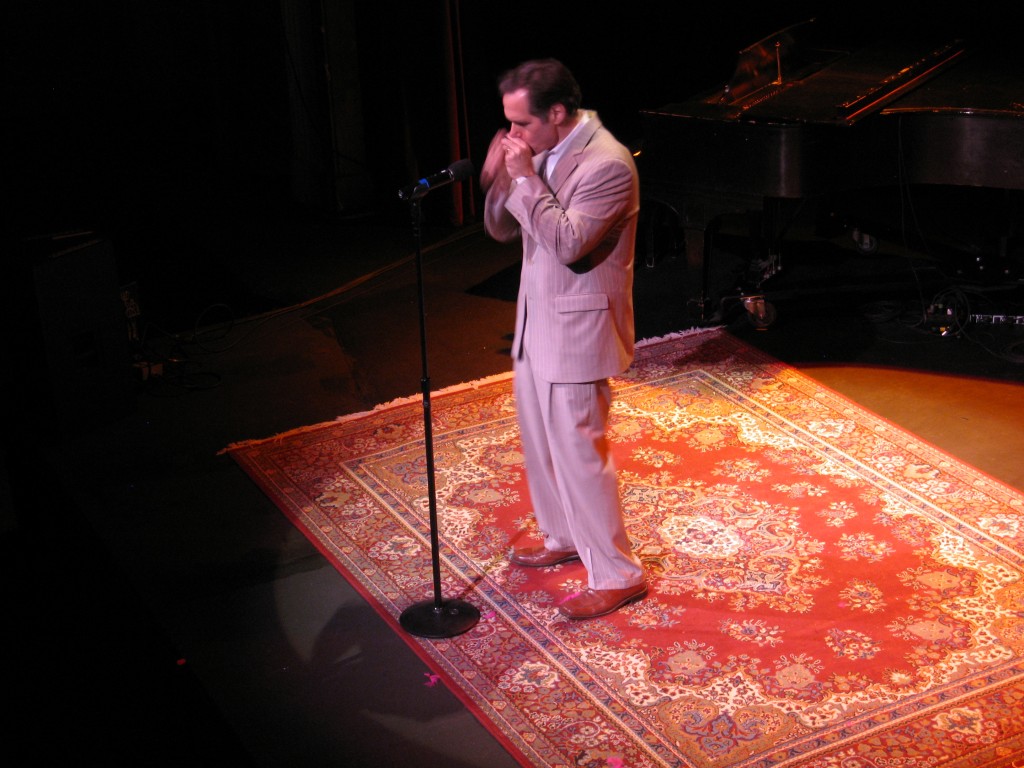Got a Jones for Gear? Read This
It occurred to us recently that lots of players we know seem to constantly buy new gear, and some of those players don’t think much about how to get more out of the gear they’ve got. With that in mind, we’ve put together a few…
Tom Ball on Acoustic Little Walter
Tom Ball, besides being one of the top acoustic harmonica players working today (as visitors to our Pro Pages know well), is also a harp scholar, and a great student of the masters. Tom recently posted this message about Little Walter’s acoustic harp work to…
Tom Ball’s Advice on Getting a Clean Harmonica Sound
Tom Ball is one of the top acoustic harmonica players working today, as visitors to our Pro Pages know well. Tom posted this message to the Harp-L list recently; it’s re-posted here with Tom’s permission. (Don’t ask what we had to do to get it…
A Few Words from Bonfiglio on Killer Tone
Robert Bonfiglio, as visitors to this site know, is the most accomplished classical harmonica player now active, arguably the greatest ever. This discussion — Robert’s response to a thread concerning the effect of equipment such as microphones and amplifiers on “killer tone” — originally appeared…
Filisko on Levy
The essay below was published by Joe Filisko, undoubtedly the greatest diatonic harmonica maker in the world as of late 1999, on the Harp-L internet mailing list in May 1999. Written in response (in part) to my comments on the 1999 Buckeye Harmonica Festival, the…
Here’s How to Get a Chicago-Style Sound Through a PA
Members of the Harp-L List regularly ask how they can achieve a “Chicago” style sound when using the PA system as the main amplifier for harmonica. This page, with help from guest writer Dom DeStefano, offers a few solutions that have been tested and proved…
Have you played a Country-Tuned Harmonica? Why not?
NOTE: This discussion originally appeared in a slightly different form in a message posted to the Harp-L List on December 2, 1998. There’s been some recent discussion on Harp-L of the uses for the Huang Jazz Harp (which is in what Hohner calls Country Tuning,…
WHAT’S NEW
Categories
- Audio/Video
- Blog
- Blue Future
- Digitech RP Tricks and Tips
- Discography, CDs, Projects, Info, Notes
- Featured Video
- For the Beginner
- Gallery
- Hunter's Effects
- Hunter's Music
- Huntersounds for Fender Mustang
- Meet the Pros
- More Video
- MPH: Maw/Preston/Hunter
- My Three Big Contributions
- Player's Resources
- Pro Tips & Techniques
- Recommended Artists & Recordings
- Recommended Gear
- Recorded Performances
- Reviews, Interviews, Testimonials
- The Lucky One
- Uncategorized
- Upcoming Performances
- Zoom G3 Tips and Tricks
